Abstract
During an outbreak of influenza A/Brazil/78 H1N1 infection, 47 volunteers with clinical and virological influenza of less than 2 days duration were treated in a randomized double-blind fashion for 5 days with 100 or 200 mg of amantadine daily or with 3.25 g of aspirin daily. The aspirin treatment group defervesced more rapidly (10.3 h versus 21.5 h and 23.6 h; P less than 0.01), but by the second daily follow-up visit, both groups of amantadine recipients exhibited greater symptomatic improvement. Bothersome side effects resulted in discontinuation of therapy by 35% of the aspirin treatment group but only 3% of the amantadine treatment group (P less than 0.05). Individuals who present to a physician during an influenza A epidemic with characteristic symptoms will experience symptomatic benefit from amantadine treatment, with negligible toxicity.
Full text
PDF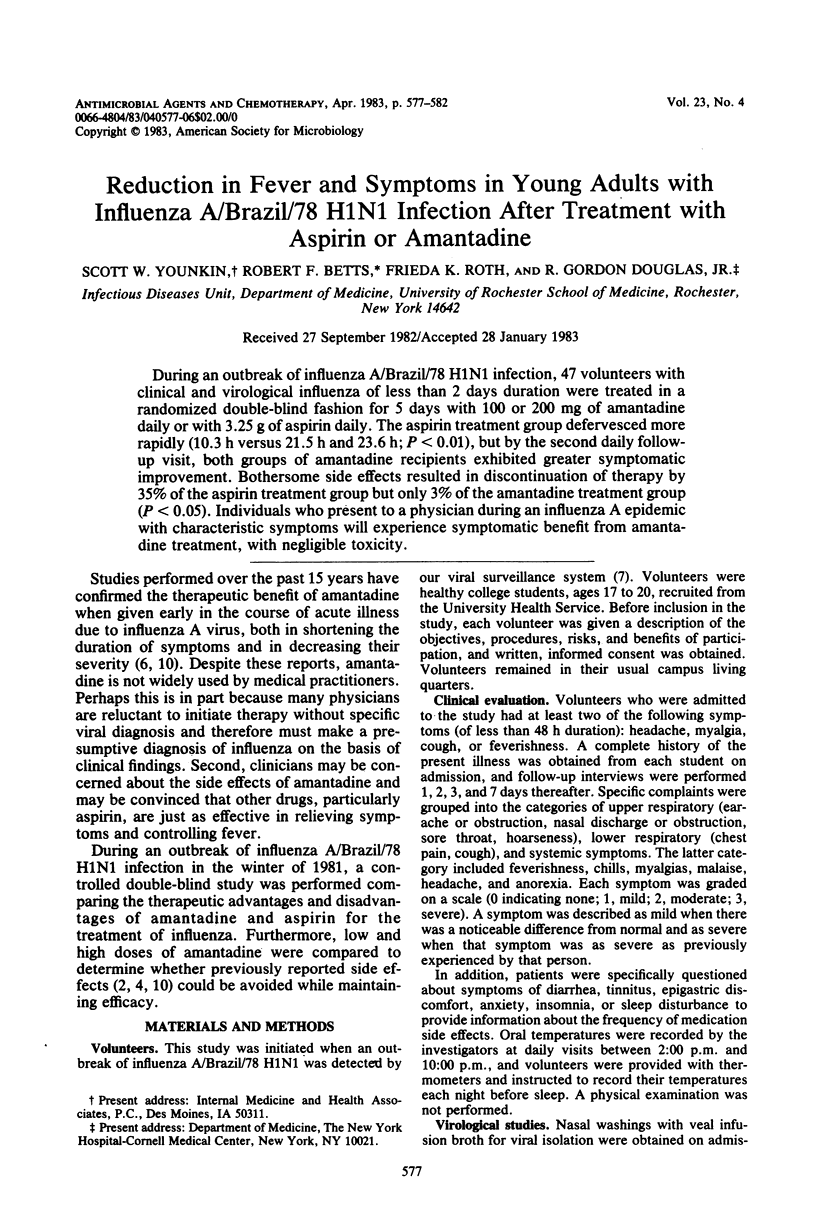
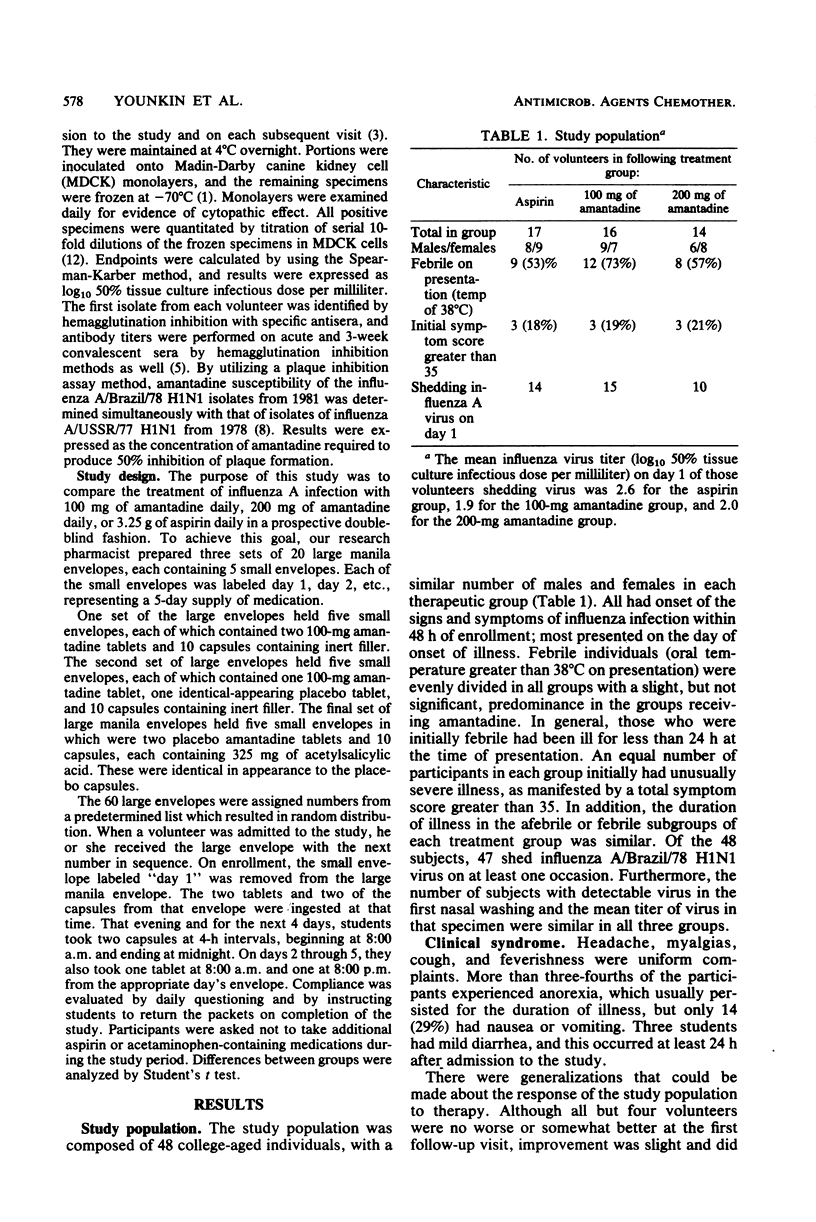
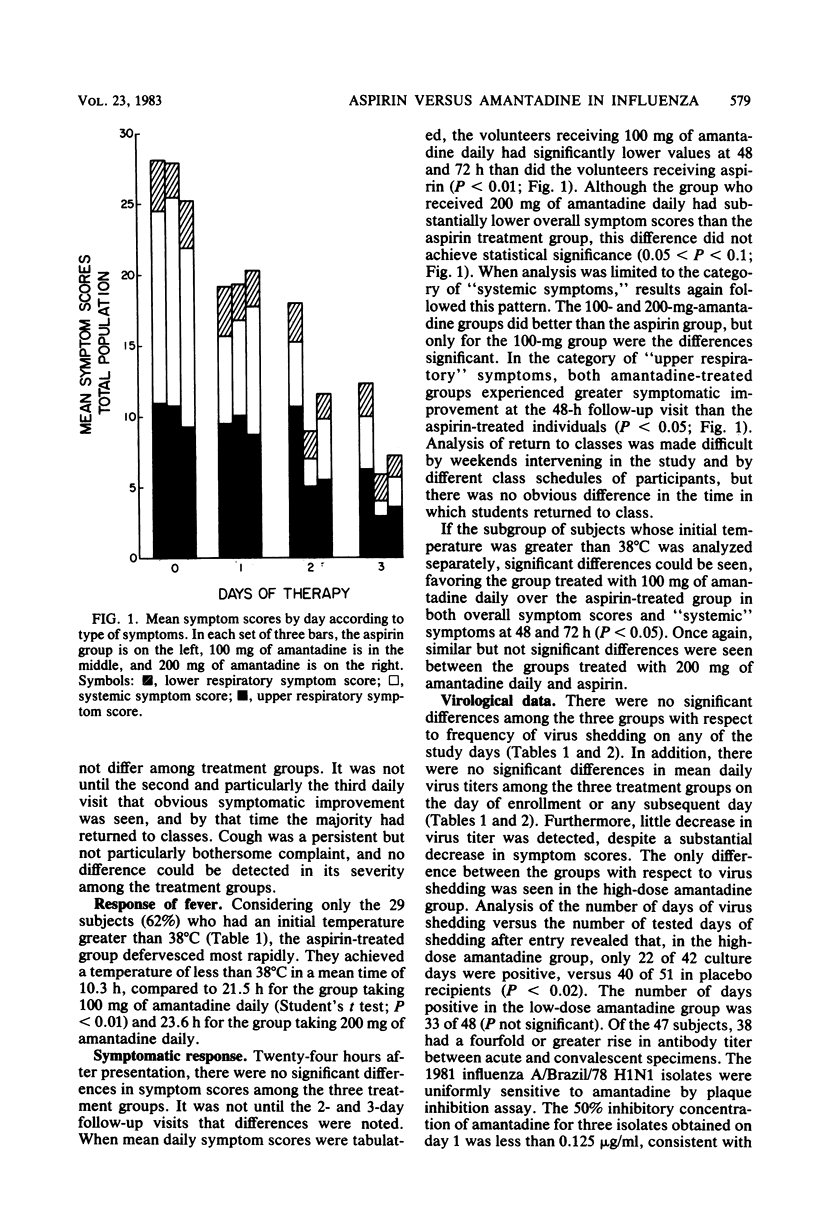
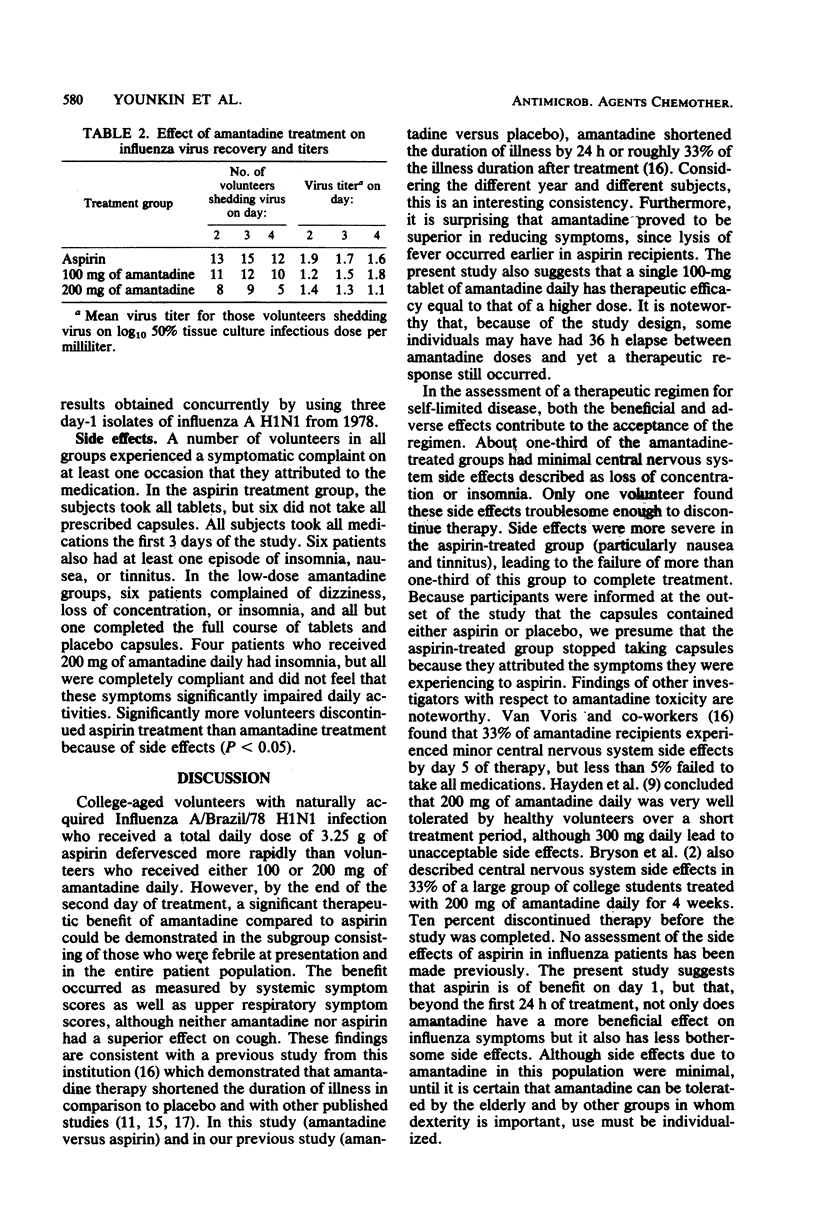
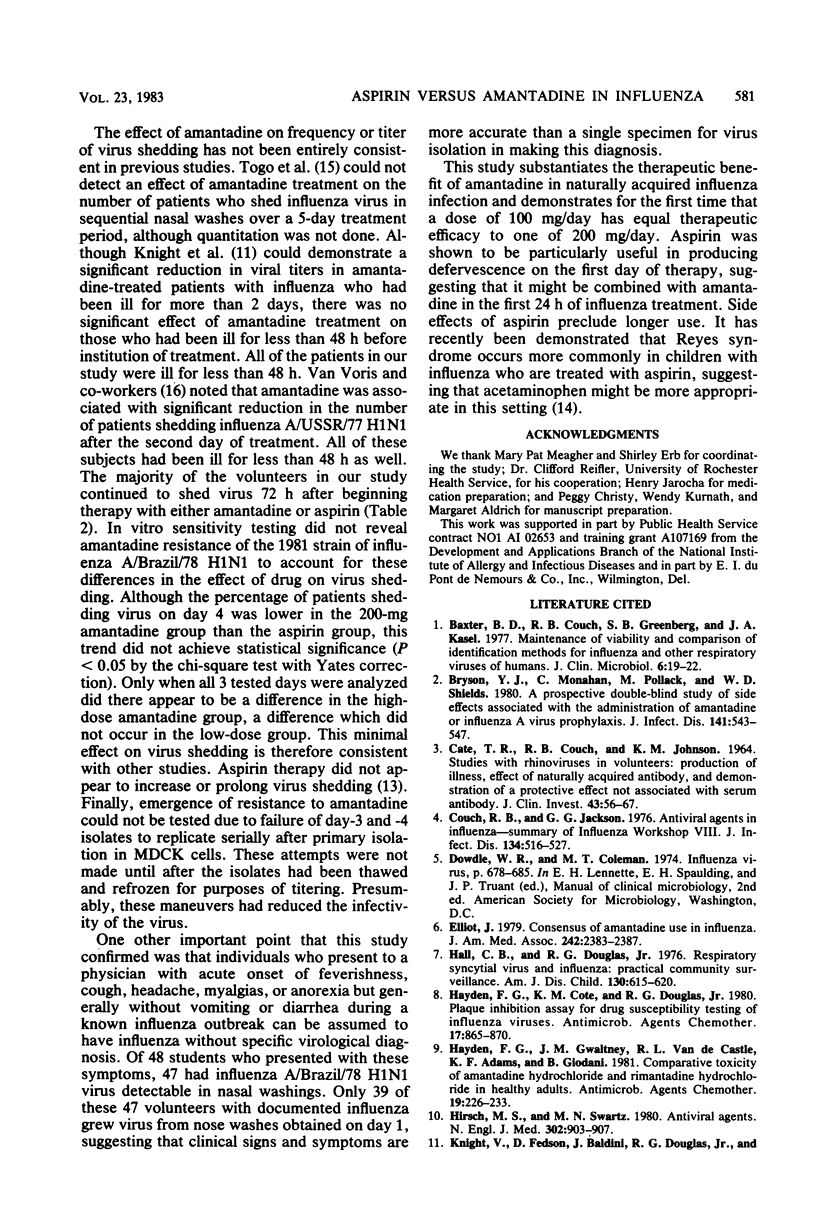

Selected References
These references are in PubMed. This may not be the complete list of references from this article.
- Baxter B. D., Couch R. B., Greenberg S. B., Kasel J. A. Maintenance of viability and comparison of identification methods for influenza and other respiratory viruses of humans. J Clin Microbiol. 1977 Jul;6(1):19–22. doi: 10.1128/jcm.6.1.19-22.1977. [DOI] [PMC free article] [PubMed] [Google Scholar]
- Bryson Y. J., Monahan C., Pollack M., Shields W. D. A prospective double-blind study of side effects associated with the administration of amantadine for influenza A virus prophylaxis. J Infect Dis. 1980 May;141(5):543–547. doi: 10.1093/infdis/141.5.543. [DOI] [PubMed] [Google Scholar]
- CATE T. R., COUCH R. B., JOHNSON K. M. STUDIES WITH RHINOVIRUSES IN VOLUNTEERS: PRODUCTION OF ILLNESS, EFFECT OF NATURALLLY ACQUIRED ANTIBODY, AND DEMONSTRATION OF A PROTECTIVE EFFECT NOT ASSOCIATED WITH SERUM ANTIBODY. J Clin Invest. 1964 Jan;43:56–67. doi: 10.1172/JCI104894. [DOI] [PMC free article] [PubMed] [Google Scholar]
- Couch R. B., Jackson G. G. Antiviral agents in influenza--summary of Influenza Workshop VIII. J Infect Dis. 1976 Nov;134(5):516–527. doi: 10.1093/infdis/134.5.516. [DOI] [PubMed] [Google Scholar]
- Elliott J. Consensus on amantadine use in influenza A. JAMA. 1979 Nov 30;242(22):2383–2387. doi: 10.1001/jama.242.22.2383. [DOI] [PubMed] [Google Scholar]
- Hall C. B., Douglas R. G., Jr Respiratory syncytial virus and influenza. Practical community surveillance. Am J Dis Child. 1976 Jun;130(6):615–620. doi: 10.1001/archpedi.1976.02120070041009. [DOI] [PubMed] [Google Scholar]
- Hayden F. G., Cote K. M., Douglas R. G., Jr Plaque inhibition assay for drug susceptibility testing of influenza viruses. Antimicrob Agents Chemother. 1980 May;17(5):865–870. doi: 10.1128/aac.17.5.865. [DOI] [PMC free article] [PubMed] [Google Scholar]
- Hayden F. G., Gwaltney J. M., Jr, Van de Castle R. L., Adams K. F., Giordani B. Comparative toxicity of amantadine hydrochloride and rimantadine hydrochloride in healthy adults. Antimicrob Agents Chemother. 1981 Feb;19(2):226–233. doi: 10.1128/aac.19.2.226. [DOI] [PMC free article] [PubMed] [Google Scholar]
- Hirsch M. S., Swartz M. N. Drug therapy: antiviral agents (first of two parts). N Engl J Med. 1980 Apr 17;302(16):903–907. doi: 10.1056/NEJM198004173021607. [DOI] [PubMed] [Google Scholar]


